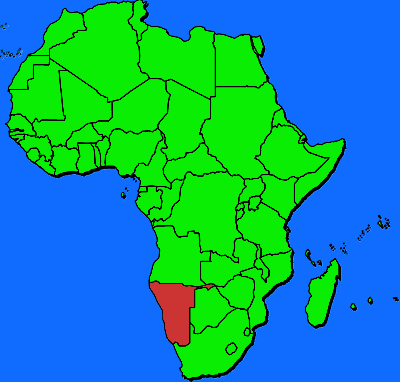
Circle the area on this map

C. Namibia shares land borders with Angola and Zambia to the north, Botswana to the east and South Africa to the south and east. Namibia gained independence from South Africa in 1990, following the Namibian War of Independence.
A. Apartheid was a system of racial segregation that curtailed the rights of the majority black population until it ended in 1994. During the first years of operation, black migrant workers lived at the Rossing mine and were exposed to dust and radiation 24 hours a day.
B. Uranium was discovered in the Namib Desert in 1928 but explorations began only at the end of the 1950. Rössing is the largest of three mines exploiting uranium in the Namib, and it produces around 7 percent of the world's uranium.
D. Namibia was the German colony of South-West Africa when the diamonds were discovered. South Africa seized the territory from Germany seven years later during World War I.